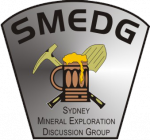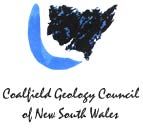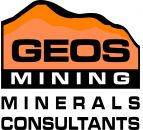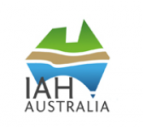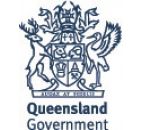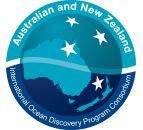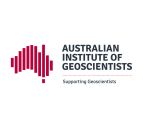GSA AESC
Public Lecture Series


'The Earth Beneath our Feet' - An exhibition on geology in our lives
Newcastle Museum
7-14 July
Free Entry
To download the poster for the ‘Earth Beneath our Feet’ exhibition <click here>
AESC 2014 coincides with July school holidays, so presents an ideal opportunity to promote earth sciences to the community. The Earth Beneath Our Feet is a free exhibition for everyone. In addition to the museum’s spectacular audiovisual presentation on coal mining and steel production, you can see unbelievable minerals and fossils, explore beautiful Australia, and learn how the Earth is constantly reshaping itself — creating and destroying through volcanoes, earthquakes, and erosion! Discover stories of our great geologists and find out what is happening in the incredible world of modern geoscience. You might even bump into a roving dinosaur! The Geological Survey of New South Wales is proud to present this exhibition in association with the AESC. Be amazed at Newcastle Museum from the 7th to 14th of July and find out what really is beneath your feet!
AESC2014 – Public lectures at Newcastle Museum
PROGRAM SCHEDULE or click here
Monday 7th July
Searching for other Earths
How are planets made? How do they evolve? And how do you form a planet like Earth with plate tectonics, a breathable atmosphere, and life?
Dr Craig O’Neill (Macquarie University) Click here for Abstract
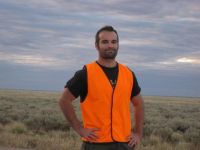 |
Craig O'Neill is a planetary scientist and geodynamic modeller at Macquarie University. He completed his PhD at the University of Sydney, before moving to Houston to work on a joint between Rice University and NASA's Lunar and Planetary Science Institute on Martian volcanism. He returned to Australia in 2006 and has been at Macquarie University since then. In that time he has been the Australian newspaper's Young Scientist of the Year, a NSW Young Tall Poppy award winner is a current ARC Future Fellow. His research ranges from geothermal exploration, to core formation, to plate tectonics, as its all got to do with the physics of planets in the end.
Making the sky blue: The early history of Earth and the rise of complex life
An overview of the history of early Earth and how ancient life gained a foothold and then evolved over the aeons to transform our planet to the one we know and love.
Professor Martin Van Kranendonk (UNSW) Click here for Abstract
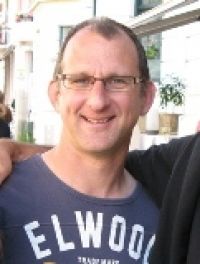 Martin was born and trained in Canada, receiving his PhD in 1992 from Queens University in Kingston, Ontario. After working at the Geological Survey of Canada from 1992-1994, Martin moved to Australia as an ARC post-doctoral fellow at the University of Newcastle, where he commenced research on the Pilbara. He joined the Geological Survey of Western Australia in 1997, where he worked for 15 years until the start of 2012, when he accepted a position as Professor at the University of New South Wales, in Sydney, Australia. His main interests are Archean tectonics and the geological setting of early life on Earth, and he is widely published in these fields. Martin is Chairman of the Precambrian Subcommission of the International Commission on Stratigraphy, an associate editor of the journals Precambrian Research, Geology, Astrobiology, and Episodes, Co-Director of the Australian Centre for Astrobiology, co-leader of IGCP 599 “Changing Early Earth”, and Core member of the International Precambrian Research Centre of China. He has appeared on numerous television and radio documentaries on early Earth, and has been involved in educational outreach programs for school children and the general public.
|
Tuesday 8th July
The wonderful world of gems
Gemstones have long fascinated humankind but what makes them so special and how do they form?
Dr Ian Graham (UNSW) Click here for abstract
 Dr Ian Graham is a Senior Lecturer in Earth Sciences at the University of New South Wales. He obtained his BAppSc (Hons) from the University of Technology, Sydney in 1991 and PhD in 2000. His areas of research interests include ore deposit genesis, igneous petrology, geochronology, gem deposits, applied geochemistry and mineralogy and intraplate volcanism. He is Vice-President of the Geological Society of Australia and Fellow of the Geological Society, London. He has worked on gems throughout eastern Australia, far eastern Russia, Indonesia, SE Asia and Greece. He is currently an Associate Editor of Mineralogical. Dr Ian Graham is a Senior Lecturer in Earth Sciences at the University of New South Wales. He obtained his BAppSc (Hons) from the University of Technology, Sydney in 1991 and PhD in 2000. His areas of research interests include ore deposit genesis, igneous petrology, geochronology, gem deposits, applied geochemistry and mineralogy and intraplate volcanism. He is Vice-President of the Geological Society of Australia and Fellow of the Geological Society, London. He has worked on gems throughout eastern Australia, far eastern Russia, Indonesia, SE Asia and Greece. He is currently an Associate Editor of Mineralogical. |
Earthquakes – will we ever be able to predict them?
Seismic activity in Australia — how much do we really know about our earthquakes and how will we learn more?
Mr David Love (Geological Survey of South Australia) Click here for Abstract
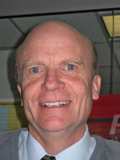 David was born in Adelaide soon after the 1954 earthquake, and graduated from Adelaide University with honours in Geophysics. He began work at the SA Mines Dept in 1980. In 1986 he was asked to look after earthquake monitoring for a few months while they advertised for an expert seismologist. He has been there ever since. After the 1989 Newcastle earthquake, seismology went from very interesting to deadly serious. He has been involved in earthquake loading codes, publicity, research, and network maintenance. David was born in Adelaide soon after the 1954 earthquake, and graduated from Adelaide University with honours in Geophysics. He began work at the SA Mines Dept in 1980. In 1986 he was asked to look after earthquake monitoring for a few months while they advertised for an expert seismologist. He has been there ever since. After the 1989 Newcastle earthquake, seismology went from very interesting to deadly serious. He has been involved in earthquake loading codes, publicity, research, and network maintenance. |
Wednesday 9th July
Newcastle Coast - Tales of Gondwana
The rocks of the coastal cliffs and rock platforms reveal what the landscape and climate were like here 250 million years ago. We can find evidence of extensive Gondwanan wetlands and rainforests, interrupted by explosive volcanic eruptions and surging, fast flowing rivers.
Roslyn Kerr Click for Abstract
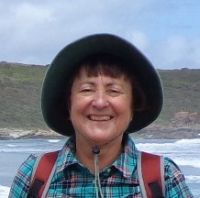
Roz has been a geologist for over 40 years, working in government, industry, university and community education. After graduating from the University of Sydney she worked for the Geological Survey of NSW for 12 years. During this time she did a lot of field work in the Central Coast-Port Stephens-Hunter Valley area. She then carried out research in coal geology at the University of Newcastle for her Master’s degree. After that she worked as an environmental and geological consultant, taught geology at the University of Newcastle, and conducted geology courses and excursions for the community through WEA and the university. Since 2001 she has run geology and beachcombing activities for local councils’ coastal summer programs. As a member of the University of Newcastle’s Coal River Working Party she recently produced a report on Newcastle’s iconic headland: ‘In Search of Nobbys’ Tunnels’. |
What is there in coal?
What is coal made of and how does it form; what geological processes make coals different from each other?
Professor Colin Ward (UNSW) Click here for Abstract
 Colin Ward has more than 40 years academic and research experience in sedimentary geology, with a special focus on coal geology and related fields. He is the author of several books and more than 100 research papers on different aspects of coal geology, and has provided course programs and conducted research for a number of universities, research organisations and exploration companies in Australia and overseas. Colin formally retired as Professor of Geology at the University of New South Wales in 2006, but continues an active teaching and research program as a Visiting Professorial Fellow at UNSW and also as a Visiting Scientist with CSIRO. Professor Ward’s contributions to coal geology have been recognized by a number of national and international awards, including the Award for Excellence from the Coalfield Geology Council of New South Wales, the Gilbert H. Cady Award from the Coal Geology Division of the Geological Society of America, and the Ralph J. Gray Award and the John Castaño Honorary Member Award from the Society for Organic Petrology. He is a Fellow of the Geological Society of Australia, the Geological Society of America, the Australian Institute of Geoscientists and the Australasian Institute of Mining and Metallurgy. |
Geology and WW1 - The Tunnellers
The story of the Australian World War 1 Tunnellers is unfamiliar to most of us. Similarly the role of geology in warfare is not often referred to. This talk is an overview of the inception and feats of the Tunnellers and of the geology of the Western Front.
Dr Janece McDonald (University of Newcastle) Click here for Abstract
|
|
Thursday 10th July
Life, Sex, Songs, Scrat and the Sponge: Australia’s Guinness Book of Evolutionary Record
The ‘Guinness Book’ of extraordinary moments in the history of life, from the origin of life itself to the origins of sex, the first animals, the conquest of land and even the world’s biggest dinosaurs is a celebration of things Australian!
Professor Mike Archer (UNSW) Click here for Abstract
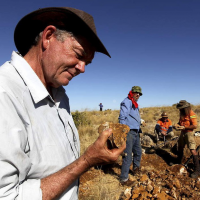 Head of the Evolution of Earth & Life Sciences Research Group at UNSW Head of the Evolution of Earth & Life Sciences Research Group at UNSW Mike Archer was born in Sydney but grew up in Appalachia, USA, where, while learning to play banjo and make moonshine, he became obsessed with fossils from the age of 11. After graduating from Princeton University (MCL; Geology & Biology) he did his PhD in the University of Western Australia (Zoology), became Curator of Mammals at the Queensland Museum, Lecturer in the University of New South Wales, Director of the Australian Museum in Sydney, Dean of Science at the University of NSW and now Prof. and Head of the Evolution of Earth & Life Sciences Research Group at UNSW. His research projects focus on the deep past such as the World Heritage fossil deposits at Riversleigh, the fragile present such as conservation through sustainable use of native resources including having native animals as pets, securing the future based on the wisdom of the fossil record, and trying to bring extinct species back into the world of the living. He has supervised >85 PhD and Hons students, produced >275 scientific publications including 15 books and received 25 awards including Fellowships in academic societies such as the Academy of Science and Royal Society of NSW, Eureka Prize for the Promotion of Science and Member of the Order of Australia. |
2–5pm
Roaming dinosaur
T Rex will be terrorising the museum!
http://www.erth.com.au/
Sponsored by SMEDG (Sydney Mineral Exploration Discussion Group)
|
|
SMEDG Proud sponsors of
the roving dinosaur
Latest News
Public Forum
Book
here
(click for more)
AESC 2014
December 2013
AESC 2014 First Circular
March 2013







